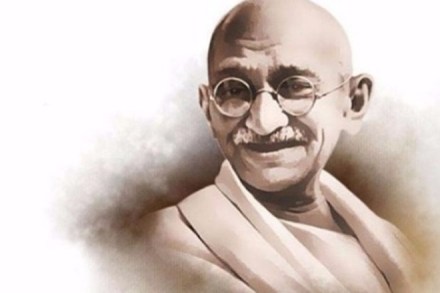The assassination of Father of the Nation Mahatma Gandhi was carried out by Nathuram Godse and no “mysterious” person was involved, senior lawyer Amrendra Sharan told this to Supreme Court of India on Monday. Earlier, the top court had asked Sharan to examine all documents related to the assassination of Gandhi after a petition, which claimed a “mysterious person” had fired the fourth bullet that killed the Mahatma, was filed by one Pankaj Phadnis – a self-professed Veer Savarkar follower.
According to Sharan, earlier investigations into the assassination case had correctly identified the killer of Mahatma Gandhi, his ideology and the weapons that were used for carrying out the crime.
Sharan was appointed as the amicus curiae in the case. He told the apex court today that there was no need to re-investigate or form a fact-finding commission in the assassination case. Lawyers Sanchit Guru and Samarth Khanna assisted Sharan in examining around 4000 pages of the trial court records as well as the Jeevan Lal Kapur Inquiry Commission report on the assassination case.
In October last year, the SC bench comprising Justices S A Bobde and L Nageswara Rao had appointed senior advocate and former additional solicitor general Amrender Sharan as an amicus curiae to assist the court in the matter.
PTI had then reported that during the initial hearing of the case, there was a view in the top court that “nothing can be done in law” in the case that was decided several decades ago. However, the bench kept a window for the possible reopening of the case by telling Sharan that its observation was not binding on him to make an assessment of the matter.
Pankaj Phadnis is a researcher and a trustee of Abhinav Bharat. He has sought the reopening of the case on many grounds, including a claim that this case was one of the biggest cover-ups in history.
Mahatma Gandhi was shot dead at point-blank range in New Delhi on January 30, 1948 by Nathuram Godse.
Phadnis had told the apex court that he had received some crucial documents relating to the case after filing the plea. He had also sought additional time to file those documents.
Phadnis had told the apex court in October that appeals filed by the convicts in the assassination case were dismissed in 1949 by the East Punjab High Court, following which the Privy Council had sent the matter back on the ground that the Supreme Court of India will come into existence in January 1950.
However, Padhnis claimed, “The Supreme Court never adjudicated this matter.” He also alleged that a second person might have been involved in firing shots at Mahatma Gandhi. To this, the top court said, “we want to go by the law and not by political passion”.
Phadnis had also questioned the ‘three bullet theory’ relied upon by various courts of law to hold the conviction of accused — Nathuram Godse and Narayan Apte, who were hanged to death on November 15, 1949, and Vinayak Damodar Savarkar who was given the benefit of doubt due to lack of evidence.
Padhnis further claimed that the Justice J L Kapur Commission of Inquiry set up in 1966 was unable to unearth the entire conspiracy that had led to the killing of Gandhi.
